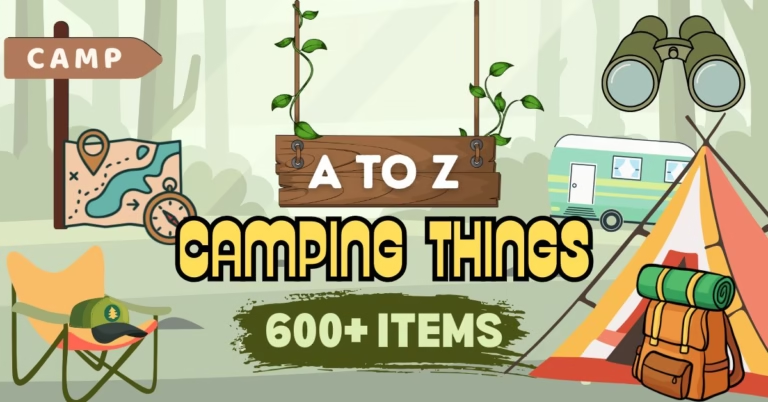In the wake of Maui’s recent devastating wildfires, a crucial debate has ignited: what causes wildfires and how do they start naturally? These catastrophic events, spurred by a confluence of weather conditions, have forced us to grapple with the various factors contributing to their occurrences. This article will delve into the multifaceted causes of wildfires, exploring their impact on both islands and forests. We will focus on recent Maui wildfires, highlighting their connection to natural factors and examining the underlying causes that lead to such catastrophic incidents.
At the end there is a surprise read for you to understand nature better.
The Island Challenge: Unmasking Natural Causes
As we delve into the root causes of wildfires, we must first recognize the distinctive challenges that islands like Maui face. With limited landmass and proximity to the ocean, wildfires on islands can spread rapidly, engulfing both residential areas and natural habitats in their path. Recent wildfires in Maui’s Lahaina region underscore the urgency of understanding how wildfires start naturally. But what exactly are the factors that can spark these ferocious blazes?

How Do Wildfires Start Naturally? Weather’s Role in the Fiery Equation
Weather conditions are crucial in starting wildfires, taking a small spark and turning it into a massive blaze. Recent fires in Hawaii’s Maui and Big Island highlight how specific weather factors contribute to such destructive events. Meteorologist Robert Bohlin explains that strong winds, dry vegetation, and low humidity form a volatile mix that fuels wildfires.
Hawaii’s consistent “trade winds” can both spread and intensify fires, depending on their alignment with the blaze’s path. The islands’ frequent dry spells and lack of rain leave vegetation susceptible to ignition. Low humidity further dries out plants, making them highly flammable. Together with the terrain, these factors create an environment where fires spread quickly.
Recognizing these weather-driven dynamics is crucial for effective wildfire prevention and control. Understanding how nature’s forces interact can guide strategies to minimize these devastating events.

How Do Wildfires Start Naturally: The Complex Chain Reaction
How do wildfires start naturally? They often arise from a complex interplay of factors, igniting a chain reaction of devastation. One significant cause is lightning strikes, particularly common in regions like Hawaii with volatile weather patterns. These strikes, while awe-inspiring, can ignite dry vegetation, especially when coupled with arid conditions.
In places like Maui, Hawaii’s second-largest island, the rugged terrain and diverse plant life can act as the perfect kindling for these fires. Dry spells further enhance this vulnerability. Spontaneous combustion is another perilous contributor, where heat builds up within decaying vegetation and triggers ignition. Plants rich in natural oils, such as eucalyptus, can exacerbate this risk.
Volcanic activity also plays a role. In areas with active volcanoes, like Hawaii, lava flows can lead to “lava fires,” as molten rock engulfs and ignites the surrounding vegetation. Understanding these natural triggers is pivotal in shaping effective wildfire prevention and management strategies.

Human Activity: An Ignition Point
Human activity stands as a critical contributor to wildfires, often serving as the ignition point for these destructive events. Forested areas, whether on an island or mainland, can fall prey to wildfires sparked by human behavior. Discarded cigarette butts or unattended campfires can easily set off flames that rapidly escalate. On Maui, where tourism is a major industry, the negligence of a single individual can lead to catastrophic consequences. The responsibility falls on everyone to exercise caution and prevent these incidents.
Climate Change’s Unseen Hand In Starting Wildfires Naturally
The intensification and frequency of wildfires are inextricably linked to climate change. Rising temperatures, altered weather patterns, along with extended droughts create conditions conducive to wildfires. The connection between climate change and wildfire risk is particularly evident in Maui’s delicate ecosystems, where the disruption of balance poses a significant threat. Addressing climate change becomes a crucial step in mitigating the severity and recurrence of these events.

What Causes Wildfires? Briefly Explained
Here is brief list explaining the causes of wildfires; both natural and those caused by human.
- Lightning Strikes: Lightning, which is a natural occurrence during thunderstorms; can ignite dry vegetation, especially in arid regions. One more reason of how wildfires start naturally.
- Human Activities: Unattended campfires, not properly discarded cigarettes, and equipment sparks contribute significantly to accidental wildfires.
- Arson: Intentionally set fires, known as arson, can cause extensive damage and put lives at risk.
- Power Lines and Electrical Equipment: Malfunctioning power lines or equipment can produce sparks that ignite surrounding dry vegetation.
- Campfires and Cooking: Poorly managed campfires or outdoor cooking can spread to nearby flammable materials.
- Cigarette Butts: Discarded cigarette butts, even when seemingly extinguished, can smolder and ignite dry grass.
- Debris Burning: Uncontrolled burning of yard waste and agricultural debris can escalate into large wildfires.
- Sparks from Machinery: Operating equipment, such as chainsaws or lawnmowers, in dry vegetation can generate sparks that ignite fires.
- Railroad Operations: Moving trains can produce sparks that ignite nearby vegetation, especially in dry conditions.
- Natural Events: Volcanic eruptions, in rare cases, can cause wildfires by ejecting burning materials into nearby vegetation.

Learning from History: Unforgettable Wildfires
To truly grasp the causes of wildfires starting naturally, we need to examine historical instances where these blazes wreaked havoc on an unprecedented scale. A brief overview of some of the largest wildfires in history provides insights into the diverse triggers and devastating impacts:
- 2003 Siberian Taiga Fires (Russia) – 55 Million Acres: Arid conditions and human exploitation contributed to this devastating blaze that affected Siberia, northern China, and northern Mongolia.
- 1919/2020 Australian Bushfires (Australia) – 42 Million Acres: Extreme bushfires exacerbated by record temperatures and drought led to catastrophic impacts on wildlife and human lives.
- 2014 Northwest Territories Fires (Canada) – 8.5 Million Acres: Fires in northern Canada highlighted the danger of both natural and human-caused blazes.
- 2004 Alaska Fire Season (US) – 6.6 Million Acres: Record lighting strikes and dry conditions led to the worst fire season in Alaska’s history.
- 1939 Black Friday Bushfire (Australia) – 5 Million Acres: A culmination of drought, high temperatures, and strong winds fueled this deadly blaze in Victoria.
- The Great Fire Of 1919 (Canada) – 5 Million Acres: The Great Fire’s impact on Canada’s boreal forest underscores the need for responsible land management.
- 1950 Chinchaga Fire (Canada) – 4.2 Million Acres: The Chinchaga fire’s massive smoke cloud affected visibility across North America and Europe.
- 2010 Bolivia Forest Fires (South America) – 3.7 Million Acres: Human-caused fires and extreme drought wreaked havoc on Bolivia’s Amazon.
- 1910 Great Fire of Connecticut (US) – 3 Million Acres: A two-day fire that united smaller blazes resulted in one of the worst wildfires in US history.
- 1987 Black Dragon Fire (China and Russia) – 2.5 Million Acres: Suspected to be the deadliest forest fire in China, human action might have played a role.
The Path Forward: Nurturing Resilient Ecosystems
As we dissect the causes of wildfires, the imperative for a multifaceted approach becomes clear. Combating wildfires requires a combination of public awareness, responsible behavior, and effective land management. By educating the public about fire safety, enforcing strict regulations during dry spells, and prioritizing climate change mitigation, we can work toward a future where the devastating impacts of wildfires are minimized. Whether on an island like Maui or in vast forests worldwide, the mission remains the same: to protect our ecosystems, prevent loss, and foster a harmonious coexistence with nature.
To understand more about the impact humans are having on earth; check out our earth day book. ‘The Earth Protests‘ is an engaging read to comprehend the pain humans are causing to this planet with their actions. It’s available on Amazon!




